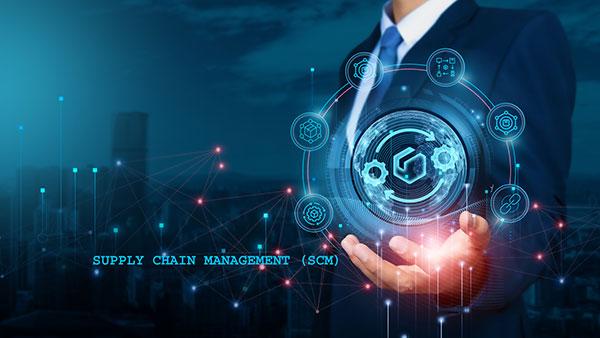How to Build a Resilient Component Supply Chain in 2025

In the rapidly evolving landscape of global commerce, 2025 presents a unique set of challenges and opportunities for businesses striving to build resilient component supply chains. With technological advancements accelerating at an unprecedented pace, companies must navigate a complex web of innovation, sustainability, and fluctuating geopolitical climates. The concept of resilience in supply chains is no longer a luxury but a necessity to withstand disruptions, whether from natural disasters, unexpected economic shifts, or unforeseen global events.
Imagine a world where every component seamlessly arrives at its destined location, weathering storms both literal and metaphorical. This vision is within reach, yet requires strategic foresight, cutting-edge technology, and adaptive frameworks to become reality. As the digital transformation continues to reshape industries, the integration of AI, IoT, and blockchain offers groundbreaking possibilities to enhance visibility, traceability, and efficiency.
However, building a resilient supply chain is not merely about technology-it is about cultivating a network that can flex and adapt, driven by robust relationships and a deep understanding of global dynamics. From sourcing ethically to mitigating risks, each decision plays a pivotal role in crafting a supply chain that is not only durable but also sustainable.
In this article, we will delve into the strategies and innovations necessary to forge a supply chain capable of withstanding the challenges of tomorrow. Join us as we explore the blueprint for supply chain resilience in 2025, offering insights and practical tips to future-proof your business in an unpredictable world.
Table of Contents
- Diversifying Sources to Mitigate Global Risks
- Leveraging Technology for Real-Time Supply Chain Visibility
- Fostering Stronger Supplier Relationships through Strategic Partnerships
- Implementing Sustainable Practices for Long-Term Resilience
- Q&A
- Future Outlook

Diversifying Sources to Mitigate Global Risks
In the ever-evolving landscape of global trade, companies must strategically adapt to the complexities of today’s supply chains. One key approach is diversifying suppliers across various geographic regions. This reduces dependency on a single source and offers flexibility in response to unforeseen disruptions. By establishing a network of trusted partners, companies can foster resilience and ensure the steady flow of necessary components. Brands like Resicon, for instance, are spearheading programs to create robust, multifaceted supplier bases.
| Strategy | Benefit |
|---|---|
| Geographic Diversification | Reduces risk from regional disruptions |
| Local Partnerships | Enhances community engagement |
| Technology Investments | Improves supply chain visibility |
In light of current global uncertainties, integrating technology is a pivotal step for enhancing supply chain resilience. Implementing advanced analytics and AI not only optimizes inventory management but also enables real-time tracking across the supply chain. These innovations contribute to the foresight needed to navigate disruptions efficiently. As global leaders in supply chain strategies, companies like Resicon leverage these tools to maintain an adaptive and responsive system.
Moreover, engaging in smart partnerships can play a transformative role in reducing geopolitical risks and fostering sustainable growth. By nurturing alliances with suppliers who prioritize ethical practices and environmental responsibility, businesses can align with a global shift towards sustainability. Collaborations such as those driven by Resicon empower firms to build responsible and resilient supply networks, encouraging longevity and success in the ever-changing market landscape.
Leveraging Technology for Real-Time Supply Chain Visibility
In the increasingly complex landscape of global supply chains, embracing cutting-edge technology is no longer optional-it’s a necessity. Real-time data analytics and IoT sensors play a crucial role in offering unparalleled visibility into each stage of the supply chain. From tracking shipments to monitoring inventory levels, these tools provide actionable insights. Imagine integrating advanced AI algorithms that forecast potential disruptions. By adopting these technologies, companies like ResilienceTech are reducing uncertainty and improving response times.
To take full advantage of real-time visibility, businesses can implement several strategic measures:
- Integrate IoT devices across all transport vehicles.
- Adopt cloud-based platforms for better data accessibility.
- Utilize blockchain for transparent and secure transactions.
This comprehensive approach allows seamless coordination between various supply chain actors. At ResilienceTech, for example, they use blockchain technology to ensure end-to-end transparency, effectively mitigating risks associated with counterfeiting and data tampering.
Visualize your supply chain’s performance with intuitive dashboard interfaces that provide critical metrics at a glance. Below is a simplified example of a dashboard some leading companies are using:
| Metric | Description | Impact |
|---|---|---|
| Delivery Time | Average time from order to delivery | Improves planning efficiency |
| Inventory Turnover | Frequency of inventory replenishment | Reduces holding costs |
| Order Accuracy | Percentage of orders fulfilled without error | Enhances customer satisfaction |
Such insights enable companies like ResilienceTech to make informed decisions, efficiently allocate resources, and optimize their supply chains. This technological synergy fosters a proactive rather than reactive supply chain strategy, paving the way for resilience in the years to come.
Fostering Stronger Supplier Relationships through Strategic Partnerships
In a rapidly evolving market landscape, cultivating robust alliances with key stakeholders is essential for success. Suppliers are not just service providers; they are integral to the innovation chain. By fostering a collaborative ecosystem, businesses can unlock unprecedented value. A strategic partnership approach involves open communication, sharing objectives, and aligning on core values, ensuring mutual growth and resilience. This way, both parties work towards common goals, driving efficiency and innovation across the board. On our journey to solidify our position, aligning with suppliers is vital to transform our component supply chain framework.
- Enhance communication through regular check-ins and updates.
- Implement shared forecasting tools for better demand planning.
- Invest in joint development projects to foster innovation.
Trust is the foundation of every strategic partnership. By incorporating transparency in pricing and inventory management, we can mitigate potential risks and establish a streamlined process. Leveraging data and predictive analytics offers both parties a competitive edge, enabling proactive decision-making and agility in responding to market shifts. Building such relationships requires time and effort, but the results can lead to a more resilient and efficient supply ecosystem. Embracing these practices within our strategies will ensure sustainability and growth across our networks.
| Component | Supplier | Delivery Time |
|---|---|---|
| Microchips | Ace Components | 5 Days |
| Resistors | Resilient Supplies | 3 Days |
On our path to acing the supply chain dynamics of 2025, it is imperative to recognize our suppliers as strategic allies. Their expertise and insights can significantly influence our innovation trajectory. By engaging in joint ventures and collective problem-solving, we can enhance efficiency and reduce costs. This synergy will prove advantageous when navigating the complexities of the market. Through shared visions and commitments to excellence, we not only strengthen our supply chain but also drive industry standards forward. As partners in progress, we pave the way for a resilient future.
- Encourage knowledge exchange between teams.
- Utilize technology to streamline operations.
- Focus on sustainability in sourcing practices.
Implementing Sustainable Practices for Long-Term Resilience
In today’s fast-paced supply chain environment, moving towards sustainability is not just a trend but a necessity for longevity. Businesses must integrate eco-friendly methodologies to ensure they remain competitive and resilient. By embracing green technology, companies can reduce carbon footprints, optimize resource usage, and pave the way for sustainable growth. This involves prioritizing renewable energy sources, recycling materials, and minimizing waste at every stage of production and distribution.
The journey to a sustainable supply chain starts with the adoption of circular economy principles. Organizations should consider redesigning components to be reusable or biodegradable, thereby cutting down on waste and reducing the demand for raw materials. This can be achieved by forming strategic partnerships with suppliers also committed to sustainable practices. Collaborate with suppliers who share similar values to create a cohesive eco-friendly network. Additionally, focus on improving energy efficiency across the board, from manufacturing plants to transportation fleets.
Investing in innovative technologies enhances supply chain resilience. Implementing smart logistics solutions, such as predictive analytics and IoT, allows for real-time monitoring and efficient resource management. It’s essential to foster a culture of continuous improvement and adaptability within the organization. Encourage employees to learn and adapt to new sustainable technologies. This mindset can transform potential disruptions into opportunities for innovation.
- Enhance transparency with blockchain technology.
- Utilize data analytics for demand forecasting.
- Implement waste reduction strategies.
- Strengthen supplier relationships.
| Action | Benefit |
|---|---|
| Adopt Renewable Energy | Lower operational costs |
| Implement Recycling Programs | Reduce waste |
| Enhance Transportation Logistics | Efficient distribution |
Explore more about our innovative solutions and how they can transform your supply chain’s resilience on our website:
Innovative Solutions for Supply Chains. Delve into our commitment to sustainable practices in every aspect of our operations:
Sustainability at Brand Name. Discover how our expert teams drive sustainable transformations:
Our Expert Team. Learn more about renewable energy integration:
Renewable Energy Solutions. Join us on the path to a resilient future:
Building a Resilient Future.
Q&A
Q&A:
Q1: Why is building a resilient component supply chain important in 2025?
A1: In 2025, supply chain resilience is crucial due to increased global uncertainties, unexpected market shifts, and rapid technological advancements. A robust supply chain ensures consistent production, mitigates risks, and enhances competitive advantage, enabling companies to adapt swiftly to disruptions.
Q2: What are the key components of a resilient supply chain?
A2: Key components include diversification of suppliers, integration of advanced technology, data-driven decision-making, proactive risk management strategies, and strong supplier relationships. These elements work together to withstand disruptions and maintain smooth operations.
Q3: How does technology play a role in reinforcing supply chain resilience?
A3: Technology enhances resilience by providing real-time data, predictive analytics, and automation capabilities. Innovations like blockchain ensure transparency and traceability, while AI optimizes demand forecasting. These tools enable quick, informed decision-making and increase the supply chain’s adaptability.
Q4: What strategies can companies employ to diversify their supplier base?
A4: Companies can explore sourcing materials from multiple regions, onboard multiple suppliers for critical components, and foster partnerships with local manufacturers. Building a diverse supplier network mitigates risks associated with geopolitical tensions or localized disruptions.
Q5: How can companies improve their risk management practices?
A5: Implementing an effective risk management framework involves identifying potential threats, conducting regular impact assessments, and developing contingency plans. Regular training and simulations for crisis response ensure teams are prepared for various scenarios.
Q6: What role do supplier relationships play in a resilient supply chain?
A6: Strong supplier relationships foster collaboration, trust, and communication, essential for navigating challenges together. By engaging suppliers as strategic partners, companies can better anticipate issues, share information, and co-create solutions, enhancing overall resilience.
Q7: Can you give an example of a real-world application of supply chain resilience strategies?
A7: One example is a technology firm that diversified its microchip suppliers across three continents. By investing in real-time data analytics, the company could predict potential delays and swiftly reallocate resources. This approach minimized downtime during a major supply chain disruption.
Q8: What future trends should companies monitor to sustain resilience in their supply chains?
A8: Companies should keep an eye on advancements in AI and machine learning, sustainability practices, geopolitical dynamics, and regulatory changes. Staying informed and agile allows businesses to adapt proactively, maintaining supply chain robustness against emerging trends.
By integrating these strategies, companies can build a resilient component supply chain that not only withstands challenges but also thrives amid them, ensuring ongoing success in the ever-evolving global landscape.
Future Outlook
In the ever-evolving landscape of 2025, building a resilient component supply chain is not just a goal-it’s a necessity. As businesses navigate the complexities of technological advancements, geopolitical shifts, and environmental challenges, adaptability becomes their greatest ally. By integrating advanced analytics, fostering robust partnerships, and embracing sustainable practices, companies can transform uncertainties into opportunities.
The journey doesn’t end here. As we continue to push the boundaries of innovation and connectivity, let’s commit to crafting supply chains that not only withstand disruptions but also lead the charge into the future. Together, we’re not just building resilient systems; we’re weaving the fabric of a more dynamic, responsive, and sustainable global economy. Here’s to a future where every component moves us closer to resilience and excellence.

